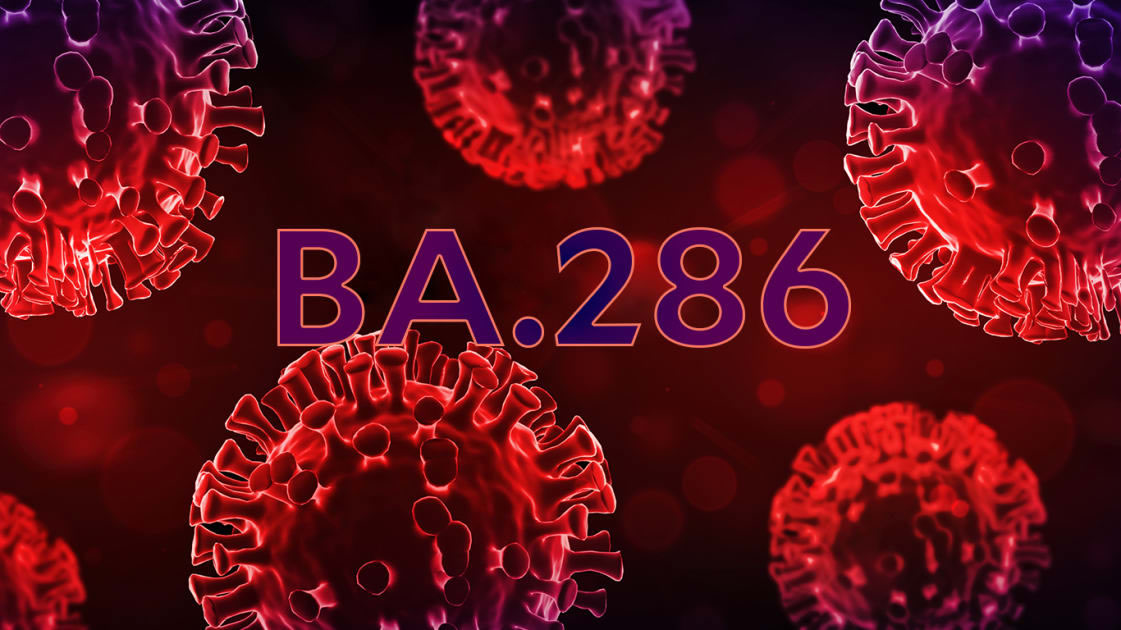In recent weeks, a highly mutated variant of COVID-19 called BA.2.86 has drawn global attention and sparked concern. Health authorities are tracking the spread of the newly emerged variant, which has been detected in humans and wastewater samples in several countries, including the United States.
The variant, nicknamed “Pirola” on social media, has some scientists on high alert due to its large number of mutations compared to previous omicron subvariants, which have been the dominant COVID-19 strains circulating since 2021.
Although it has only caused a small number of infections so far, BA.2.86 is notable because it has multiple genetic differences, and it has been detected in several locations in a short amount of time, the U.S. Centers for Disease Control and Prevention said in an update on BA.2.86 published Aug. 30.
Additionally, BA.2.86 may be more capable of bypassing immunity and causing infection in people who have recovered from COVID-19 or who received COVID-19 vaccines, the CDC on Aug. 23 in its initial risk assessment of the variant.
The World Health Organization classified BA.2.86 as a “variant under monitoring” on Aug. 17 because of its “large number of mutations identified.”
As of Aug. 31, the BA.2.86 variant has been linked to 28 cases in 8 countries, per the global virus database GISAID. These include United States, Canada, Denmark, Sweden, Portugal, Israel, the United Kingdom, South Africa and France. BA.2.86 has also been detected in wastewater samples in additional countries, the CDC said.
Early sequencing data show BA.2.86 has 34 more mutations in its spike protein than BA.2, which drove aCOVID surge in 2022, and 36 more than XBB.1, which rapidly took over the U.S. in early 2023, according to an Aug. 24 paper in medical journal The BMJ.
It’s unclear whether BA.2.86 will cause a surge in infections, but the current rise in cases and hospitalizations in the U.S. is likely being driven by omicron XBB lineage viruses, not BA.2.86, the CDC said.
As scientists race to investigate the variant and how its mutations could impact transmissibility and severity, there’s no reason for Americans to panic yet, experts say.
Here’s what experts know so far about BA.2.86, aka Pirola, the symptoms it’s causing, its ability to spread and how it could impact COVID vaccine boosters this fall.
What is BA.2.86?
BA.2.86, which some experts have dubbed “Pirola,” was first detected in late July, and since then, it has caused a handful of infections worldwide.
It appears to have descended from the omicron BA.2 sublineage, which caused surges of the virus in early 2022, Dr. Andrew Pekosz, a virologist at Johns Hopkins University, tells TODAY.com.
“The critical thing about this variant (BA.2.86) is that it has a whole host of mutations compared to some of the omicron variants that emerged about two years ago,” says Pekosz.
The mutations or changes in the virus sequence can affect how contagious a virus is, how well it responds to treatment and how severely it affects people, per the CDC.
“It represents a highly mutated form of SARS-CoV-2,” says Pekosz — in other words, BA.2.86 looks very different from the prevailing omicron XBB subvariants circulating.
What are the symptoms of BA.2.86?
Right now, “there’s no data on symptoms associated with infection because the case numbers are just too small,” Pekosz says.
In its risk assessment of BA.2.86, the CDC said “at this point, there is no evidence that this variant is causing more severe illness,” but this may change as additional scientific data comes in.
Common symptoms of other COVID-19 variants and subvariants include:
- Cough
- Sore throat
- Runny nose
- Sneezing
- Fatigue
- Headache
- Muscle aches
- Altered sense of smell
Based on what the CDC knows now about BA.2.86, existing tests and medications used to treat COVID-19 “appear to be effective with this variant,” the agency said.
Where is BA.2.86 spreading?
As of Aug. 31, BA.2.86 has been linked to 10 cases in Denmark, five in Sweden, four in the United States, three in South Africa, two in Portugal, one in Israel, one in the United Kingdom, one in Canada and one in France, according to GISAID.
The variant has been detected in at least four states in the U.S. in either people or wastewater, the CDC said. Human cases were documented in Michigan, Virginia and Ohio, and BA.2.86 has been detected in wastewater in New York City. GISAID also reported a case in Texas.
The person in the U.K. had no recent travel history, indicating the subvariant is likely already spreading there, per The BMJ report.
“The variant is probably spreading much more broadly than we’ve detected so far,” says Pekosz, adding that a lack of testing and sequencing is likely causing a delay in reporting.
Right now, the EG.5 or Eris subvariant, a descendant of the omicron XBB sublineage, accounts for the largest proportion, 20.6%, of COVID-19 infections in the U.S., according to the latest estimates from the CDC.
After EG.5, the next most common subvariant circulating in the U.S. is another omicron XBB descendant, FL.1.5.1, followed by XBB.1.16 (also called “Arcturus”), per CDC data as of Aug. 19.
Globally, EG.5 and XBB.1.16 are the most prevalent COVID-19 strains, both accounting for 21% of sequences worldwide, per the WHO.
Is BA.2.86 more transmissible?
Right now, it’s too early to tell whether BA.2.86 is more transmissible than other variants, says Pekosz. “It’s impossible to gauge anything about transmissibility or disease severity from that (small number of cases),” he adds.
According to the CDC, based on the information available transmissibility is unchanged***
However, based on what we know about the genetic sequence of BA.2.86 and the mutations in its spike protein, the variant will likely be able to escape preexisting immunity to COVID-19, he adds.
The CDC echoed this in its BA.2.86 risk assessment, which stated that the variant could be more capable of causing infection in people who previously had COVID-19 or got vaccinated.
“Most of the mutations that we find in the spike protein are probably going to affect the ability of antibodies to bind and neutralize the virus,” Pekosz adds.
In other words, BA.2.86 could escape not only immunity from vaccination or prior infection up until this point, but also vaccine-induced immunity from the coming fall vaccine, Pekosz adds.
“That’s why this variant is very concerning to us from a scientific standpoint,” he adds. “We need more sequences and cases to understand the variant’s transmissibility.”
According to the CDC, laboratories are currently researching the antibody neutralization of BA.2.86 to better understand how the immune system may interact with the virus.
Will BA.2.86 cause a surge in cases?
“We really don’t know if BA.2.86 will lead to increased numbers of cases,” Pekosz says. “The sequence can’t tell us how much disease the virus will cause, nor can it tell us how well it’s spreading,” says Pekosz. Only time and more data will tell.
However, the BA.2.86 does not appear to be behind the recent summer COVID surge around the country. Over the last month, there has been an increase in cases and hospitalizations in the U.S., likely driven by a combination of the new EG.5 subvariant and other omicron variants circulating, TODAY.com previously reported.
In the last two weeks, there has been a 25.3% increase in the number of average daily COVID-19 hospitalizations, according to an NBC News analysis.
In mid-August, weekly COVID-19 hospitalizations were the highest they had been since April 2023. However, the death rate due to COVID is still decreasing week by week, per CDC data.
Despite the recent increases, the absolute number of cases and hospitalizations are relatively low compared to surges in past years, experts note.
How will BA.2.86 affect boosters this fall?
Vaccine manufacturers are currently working on an updated COVID-19 booster targeting the XBB.1.5 subvariant, which was dominant through most of 2023.
No shot has been approved yet, but experts anticipate the U.S. Food and Drug Administration will authorize the updated boosters in the coming weeks and they will be available in mid to late September, TODAY.com previously reported.
“The reactivity of the booster to (BA.2.86) would be predicted to be low,” says Pekosz, meaning that BA.2.86 is probably not a good match to the updated boosters.
“This is something that could trigger a brand new booster based on its sequence, if this variant truly did become a significant cause of cases. But we don’t know that now,” says Pekosz.
The updated booster will be well-matched to the other strains currently circulating, such as EG.5, says Pekosz, so it’s still important for people to stay up to date with COVID vaccines. According to the CDC, the updated vaccine will still be effective at reducing severe disease and hospitalization.
The CDC has not yet released any firm guidance around booster doses for the fall. When the agency does make recommendations about who should get the booster this fall, the experts anticipate it will be for high-risk individuals. These include people over the age of 65, those with underlying health conditions and the immunocompromised.
In addition to vaccination, people can protect themselves against COVID-19 by taking the same precau wearing a mask, practicing social distancing, avoiding sick people and maintaining good hand hygiene.










+ There are no comments
Add yours